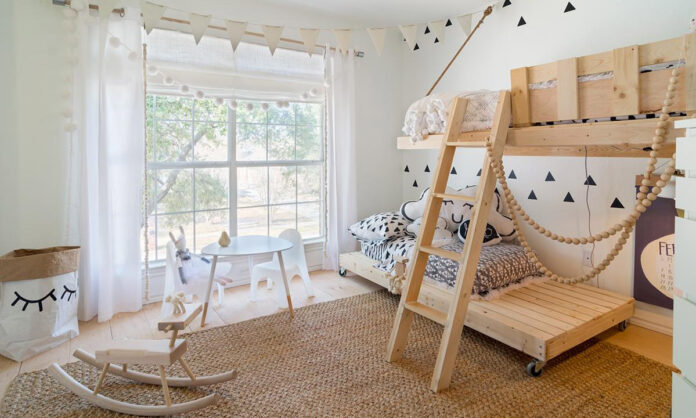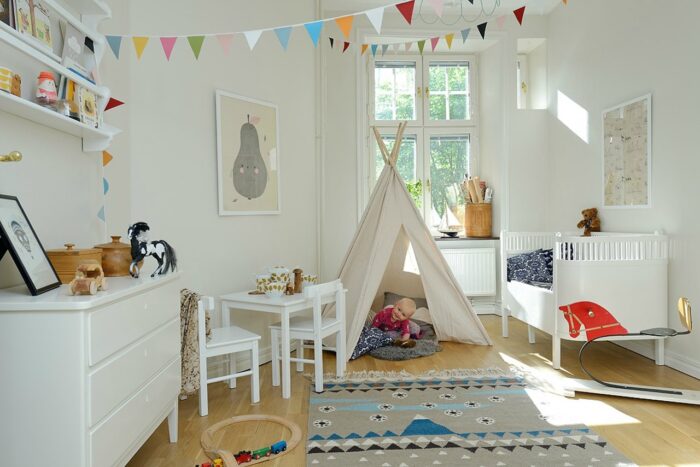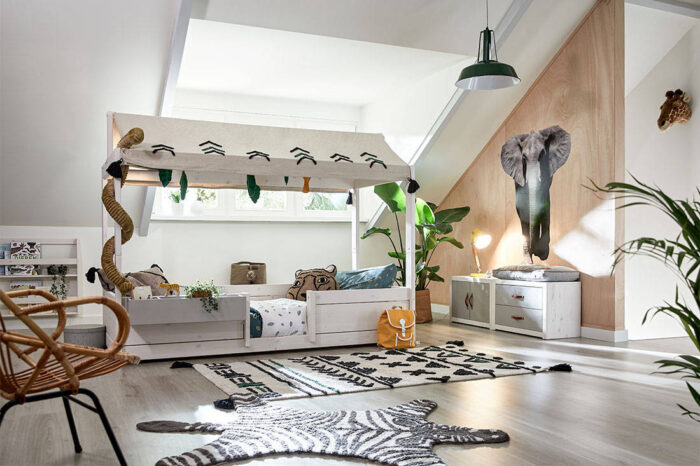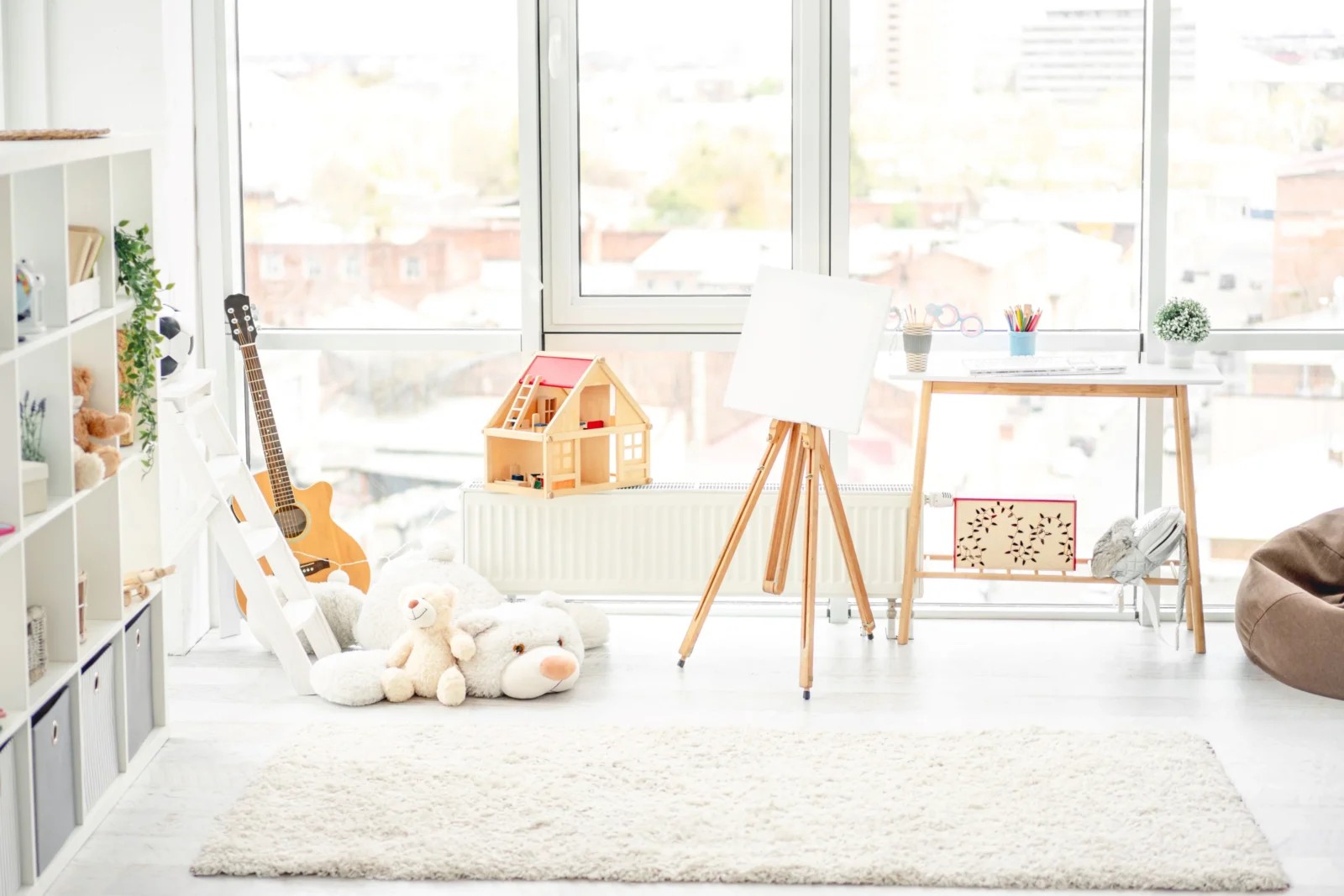
In a world that is becoming increasingly fast-paced and demanding, a home should feel like a sanctuary — a place where both parents and their children can feel safe and comfortable to live and play while also feeling inspired to make memories as a family. No matter the size or layout of the home, families deserve a balance between functionality and aesthetics, especially in shared living spaces.
Families with young children, particularly infants, have to balance these adjectives in a way that makes sense for their household. When it comes to designing or reconfiguring spaces in a home, it’s important to prioritize the needs of the children — whether that means finding an appropriate place for their stylish and durable foam play mat or creating an entire nursery space, they can grow into.
In this article, we explore the ways families can create kid-friendly home designs. Learn more with our helpful guide.
Layout and Flow
Think of the layout of a home as its canvas — a blank slate where homeowners get to choose how the furniture and decor in a given space is set up. Creating a flexible and open space not only presents an opportunity for families to spend quality time together but also ensures everyone, especially young children, can move through the area safely.
It’s important to consider the layout of a home in both shared and individual spaces. Think of creating zones within an open space, such as a family or rec room. Can you have work, play, and relaxation areas in the same space? If your infant has their play mat and toys in this area and you still need a small office space, adding dividers or stylish partitions can help create separation without closing off the room entirely.
Incorporating Kid-Friendly Materials

The right materials can act as a cornerstone of any home design — especially when that home consists of young toddlers or infants. Homes with children must consider kid-friendly materials at every home or room design stage. These materials should be able to withstand the trials of family life without losing their aesthetic nature.
Knowing which materials are right for a home with young children can save families a lot of money in both the short and long term. Certain materials to look out for are:
- Leather
- Microfibre
- Wool
- Granite
- Vinyl
These materials can stand up against spills, stains, and the activeness of infants and toddlers and the whole family at large.
Storage Solutions
One of the biggest challenges most families face when designing their spaces is whether or not they have enough storage in place. Families with young children rely on storage to simultaneously keep their homes clean, safe, and aesthetically pleasing. Knowing how to implement storage solutions can help you achieve all three goals.
Multifunctional Furniture

Furniture is a necessity in any home, but today’s homeowners are taking this need one step further — by incorporating furniture that also doubles as convenient storage. Multifunctional furniture is a way to integrate these needs without losing the beauty of the design itself.
Some ways to incorporate more functionality into furniture pieces are:
- Invest in a bed with built-in drawers
- Incorporate ottoman seating that offers hollow storage inside
- Create shelves with any vacant space under the stairs
- Install built-in storage units using tall cabinets
- Add wall cubbies in your child’s room to store books and toys
- Transform areas around the large windows in your home into nooks with bookshelves
The Benefits of Quality Storage
When it comes to creating a calming and peaceful household, one of the simplest ways to achieve this goal is by minimizing clutter and distractions. When you have young children, that goal can feel nearly impossible. With the help of multifunctional furniture and smart storage solutions, parents can reduce their stress levels while ensuring they have all the resources their little ones need to thrive.
Interactive Elements
Children love to engage in surroundings that promote interactive play and learning. When designing a kid-friendly home, it’s important to consider which elements are contributing. There are several ways parents can go about this.
- Designing a chalk wall for artistic expression
- Creating a craft corner
- Setting up a babyroom around their play mat, where they can safely engage with their toys and learn how to crawl and walk
- Build an indoor climbing gym using foam climbing sets and slides
These features promote a fun atmosphere for kids to play, and they also help develop their motor and cognitive abilities — one of the best parts about successfully creating kid-friendly designs in a home.
Budget-Friendly Choices

Embarking on a project for your family is a significant undertaking — one that should take price and budget into consideration in addition to style and functionality.
Look for items that combine these two goals — including reclaimed wood or thrifted furniture. The ability to incorporate sustainability into your kid-friendly design not only benefits your budget but also shows your children how to be resourceful and allows you to invest your money in other items that can help their development — from non-toxic playmats to climbing structures or interactive books and games.
Conclusion: Living with the Imperfections
At the end of the day, no matter how organized your home is, there will always be imperfections when you’re juggling young children and daily responsibilities simultaneously. These resources can help families stay on top of clutter and ensure their spaces are safe for their little ones to roam and learn, but there will always be circumstances where parents have to pivot and adjust.
Life is about living with imperfections and embracing them as learning opportunities. A home that’s been lived in often looks like it, and that’s okay — because perfection is often unattainable.
When it comes to designing spaces in a family home, these tips and tricks are designed to help you streamline your efforts and find accessible ways to create spaces where your little ones can laugh, learn, play, sleep, and grow.
















